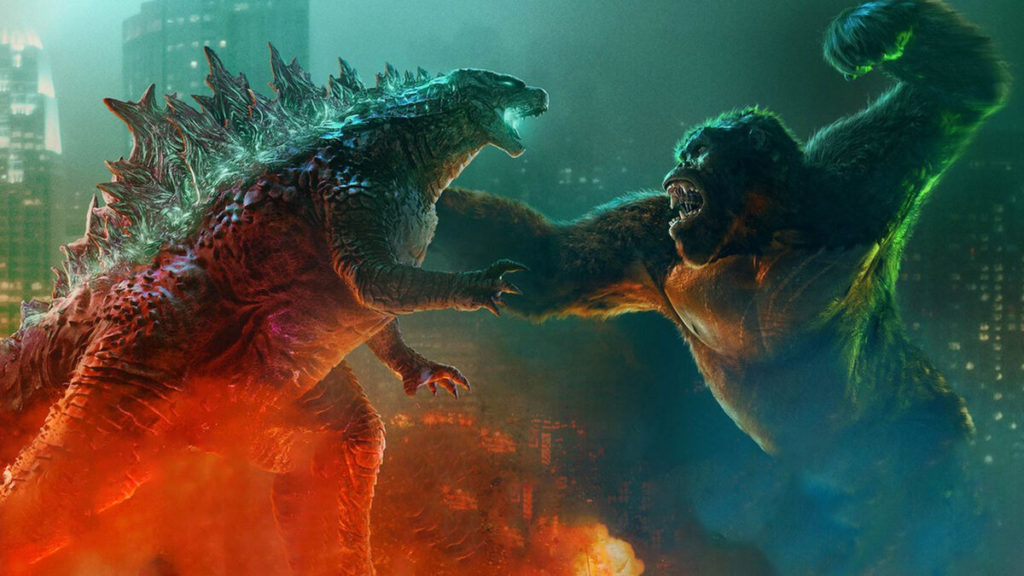This titanic collision between two iconic monsters may seem a bit far-fetched, but it’s actually incredibly realistic
Upon my last visit to the zoo, I witnessed something truly unexpected as a live marine iguana was placed inside a gorilla enclosure. ‘Do gorillas eat iguanas?’ I asked myself, before remembering that they’re mostly herbivorous creatures. ‘Okay, maybe the apes like to batter the reptiles senseless and rip off their little limbs and tails for fun,’ I further speculated. Then one of the zookeepers popped up beside me, like they tend to do when they’re clearly aching to impart some of their animal knowledge on general public plebs like myself. “I know what you’re thinking,” he said. “And no, they’re not going to fight to the death. They’re actually really friendly. Some apes even use geckos to clean their ears.” If it weren’t for this earth-shattering revelation, I probably would have struggled to accept the major twist in Godzilla vs. Kong, which accurately portrays the massive monsters as cuddly companions.
Unlike the original and less believable 1962 version of this film, in which the iconic Titans only clash because a Japanese man thinks a monster fight will boost the ratings of his TV show, this modern reboot doesn’t shy away from realism, with director Adam Wingard clearly doing his research into the behaviour and habits of both creatures. Contrary to everything you may have seen in the trailers, and what the film’s title seems to suggest, the first forty minutes sees the titular beasts lovingly draped over each other while sharing a crate of crickets. ‘Would this really happen?’ I asked myself. ‘Wouldn’t Kong be flinging Godzilla around by his tail and trying to open up his head with a rock?’ Then I remembered something else the zookeeper told me. “Gorillas and iguanas like to share meals and groom each other,” he said. “In the hotter seasons, gorillas even like to wear iguanas as hats.”
The plot only really kicks in at the ninety minute mark, when Kong is torn away from his reptile friend and relocated to Colchester Zoo. Following his inevitable breakout, the giant ape then gathers his precious belongings in his massive carpet bag and embarks on an epic quest to be reunited with Godzilla. ‘Would a gorilla really own a carpet bag?’ I thought to myself. Then I remembered something else the zookeeper told me. “Silverbacks often tie their soiled bedsheets into a bindle and fill them with things like nuts and alarm clocks,” he said.
Perhaps the film’s most surprising decision, however, was to make Godzilla a speaking part and have him voiced by Star Wars legend Anthony Daniels. ‘Would Godzilla really sound like Anthony Daniels?’ I asked myself. Then I remembered something else the zookeeper told me. “It’s not completely uncommon for certain species of lizard to talk like C-3PO,” he said. “Especially when they think they might be in danger.”
Suffice to say, I was massively impressed by the amount of research that had clearly gone into this film. But I couldn’t turn a blind eye when, in the final act, a lonely Godzilla vomited an atomic beam at the humans keeping him apart from his furry friend. ‘Now this definitely wouldn’t happen,’ I said to myself. ‘A 400-ft lizard would never shoot an atomic beam from its mouth. This is borderline fantasy.’ So confused was I that I actually tracked down the same zookeeper I spoke to before and sent him an email, asking if it was at all feasible for a 400-ft lizard to shoot an atomic beam from its mouth. He replied: “Dear Chris, I think you might be taking this film a bit too seriously. Kind regards, Alan.”
Alan’s words pierced me like a toothpick through a cocktail sausage. But my faith in the film’s authenticity was fully restored when, in one of the closing scenes, Kong took Godzilla’s spiky tail and began to clean his ears.
Godzilla vs. Kong is available to stream in the UK from April 1.
